Anyone who spends time with my wife and I know that we have a real, weird, thing for chickens. We totally love the funky little buggers. We think that they are cute, hilarious – especially their odd vocalizations, noble and super tasty when stewed with dumplings. We can be mid sentence in a very serious conversation but if we find one of those feathered guys in our vision somewhere we will promptly proclaim: “Chicken!” with a huge grin on our stupid faces. Yeah, I warned you about us.
So when I got two assignments lately to photograph chickens I was thrilled. The first was a story about the people at a small farm in Berthoud, not that far from where I live, that teaches people in the burgeoning urban homestead movement how to process their poultry. It’s usually chickens but lots of people are keeping ducks and turkeys too. This day it was just chickens. It was great to see that there was a whole family who was learning how to embrace the circle of life.


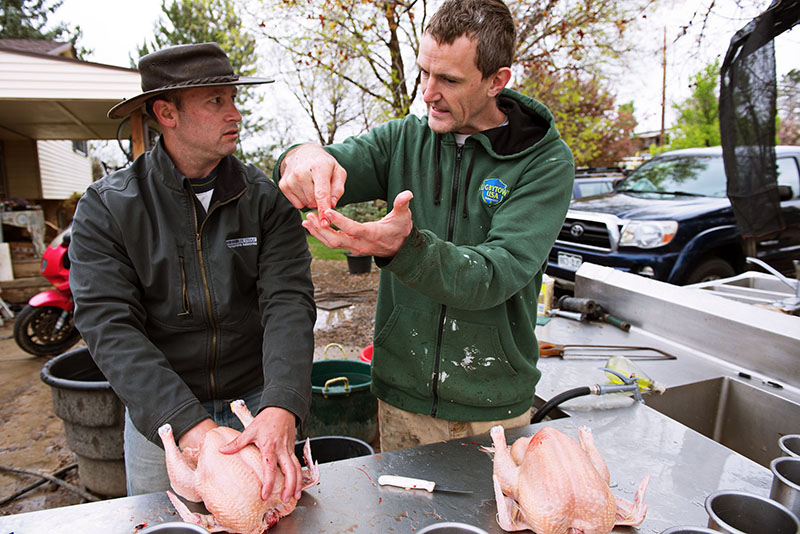

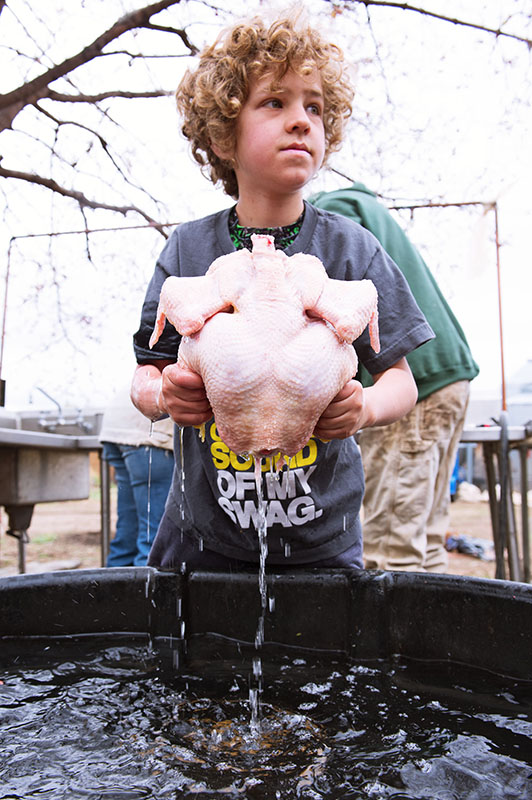
It’s been very important to me to know where my food comes from and to respect the sacrifices made for my dinner table. Seeing how the Rameys honor the birds was great to see as was the way that the people taking their class did as well.
Later on in the summer I did work on an article about a family who owns Cottonwood Creek, a pasture chicken farm out on the eastern plains of Colorado. Pasture raised is when the birds have full time access to open land to scratch, peck and eat anything that their little hearts desire. That means lots of bugs, worms and plants: a properly balanced chicken diet the way that nature designed. If you get your eggs at the store and it says “free range” that really is just a marketing term that says that the chickens live in doors but have access to a space outside the huge building for them to walk around in. It doesn’t say how big or wild the space is or much else. “Free range” is essentially the same as “never having seen the sun” chickens only you pay more for the label.
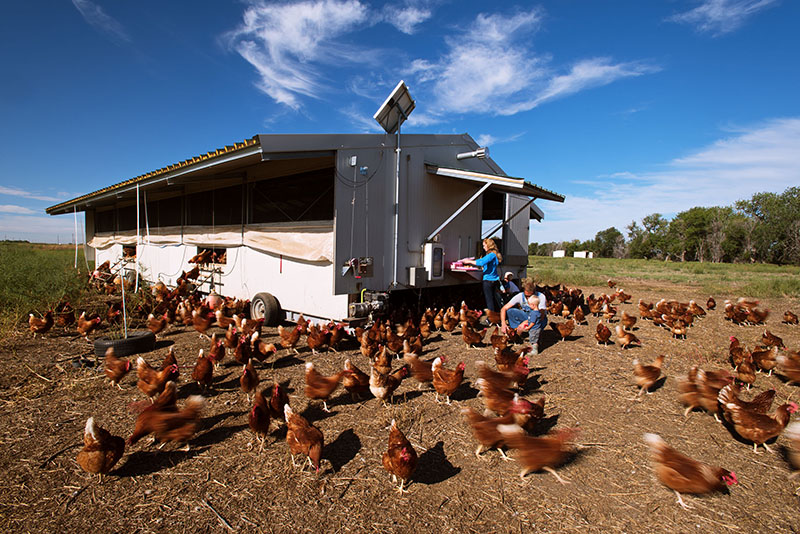
Matt Kautz and his family own about 60 acres where their hens roam in rotation so that now mobile roost stays on one plot for more than a week or so and many plots stay fallow to allow the vegetation and bug life to recuperate and be ready for the next roost to roll in.
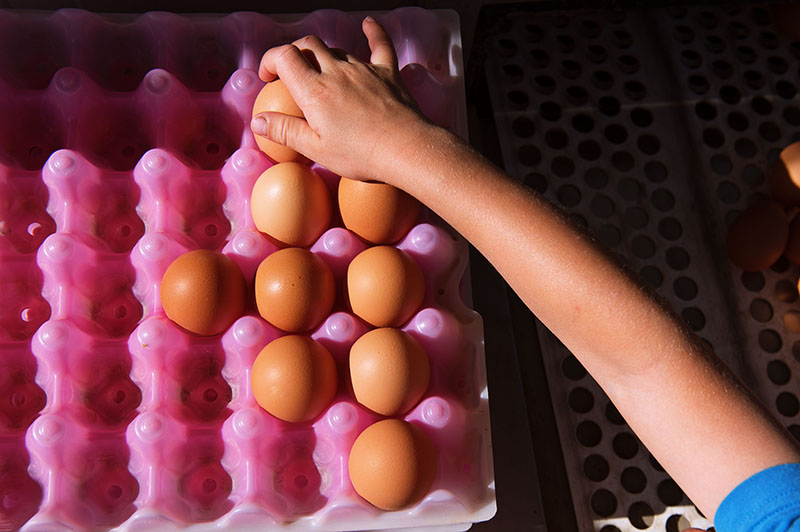
The children regularly help out taking care of their 5000 hens along with collecting the eggs every day. The kids think that they have 5000 pets to cuddle with.

The hens quickly learn that they roost is where they sleep at night which keeps them safe from predators.
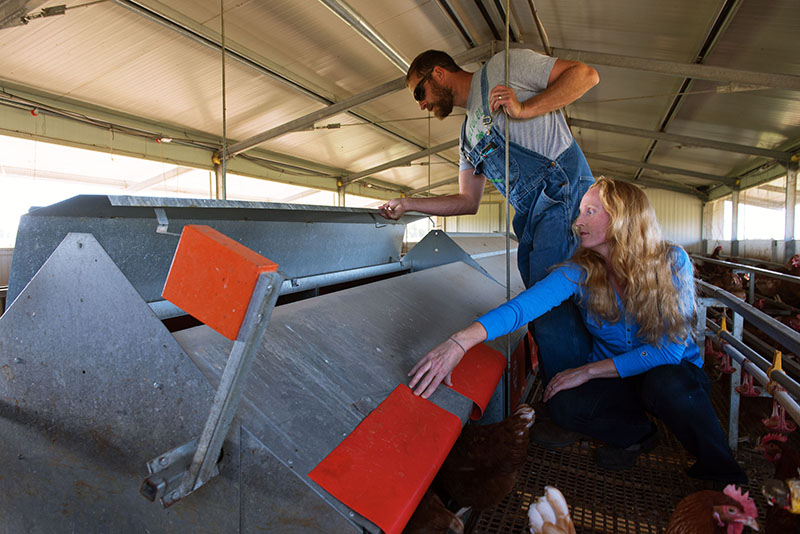
The best part was being able to watch all the hens just being, well, chickens in their natural environment. If you have never seen this you are missing out. Chickens are essentially forest ground dwelling birds and to run around in the grass and brush hunting for bugs is what they are meant to do.
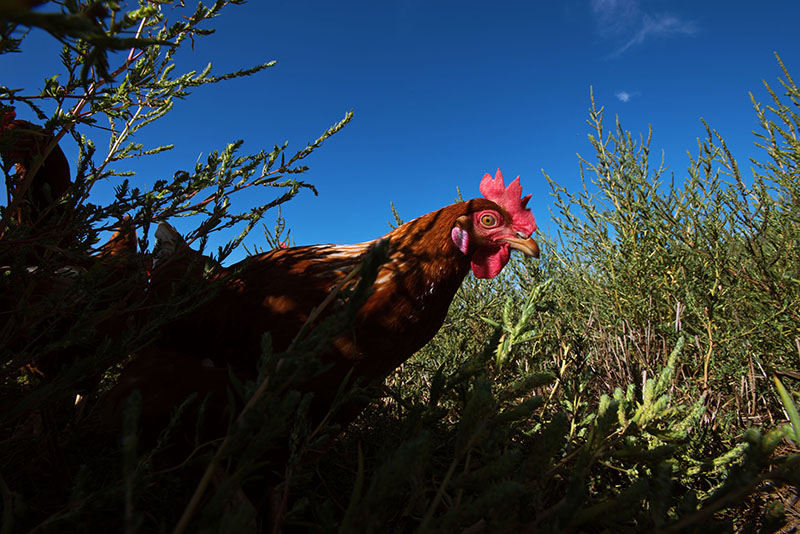
Getting down to chicken level to photograph the hunting hens was amazing. Since they are the descendants of dinosaurs it wasn’t hard to lose sense of scale and see them as tiny dinos making their way through primordial forests. I refer to the above image as “Jurassic Chicken”.


